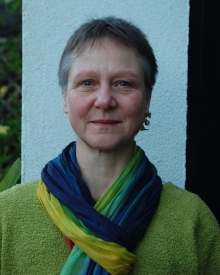Our current laboratory research
The Dietrich team investigates tissue interactions and molecular networks that control:
- How a pluripotent mesodermal precursor cell selects and commits to a particular cell fate
- When a cell may differentiate
- How the balance between cell differentiation and maintenance of a precursor/stem cell pool is achieved
- How this cell recognises and reaches its correct target site
- How cells from different sources and tissues assemble into a functional organ
- The work contributes to our understanding of precursor and stem cell behaviour, and underpins therapy development for musculoskeletal diseases
Cell fate choices, cell differentiation, and stem cell generation
Most of our organs are made from mesodermal cells, cells that are laid down during early embryonic development between the outer layer (ectoderm; gives rise to the nervous system, sense organs and skin) and the inner layer (endoderm, gives rise to the lung and gut canal) of the embryo. Mesodermal cells are multi-potent and eventually will have to decide which tissue they contribute to. Recent work from our team unravelled a complex regulatory system that controls the establishment of head muscle precursors (Bothe, 2011). Collaborative work with the Münsterberg team (Norwich) suggested that the local environment will then determine whether a cell differentiates into skeletal muscle or contributes to the heart (Camp, 2012). We are currently investigating how cells may be withheld from differentiation and instead are set aside as muscle stem cells, essential for foetal muscle growth and adult muscle repair. To achieve this, we electroporate molecular constructs suspected to change the cell’s behaviour, and assay for the expression of differentiation or stem cell markers, or the state of chromatin at gene loci associated with differentiation or a stem cell state.
In order to investigate the molecular mechanisms controlling cell fate choices, cell differentiation and stem cell deployment, we collaborated with the laboratories of Lucia Alvares (Campinas, Brazil), Erika Jorge (Minas Gerais, Brazil), Frank Schubert (UoP) Kim Dale (Dundee), and Stuart Wilson (Sheffield), and we identified novel regulators for muscle formation (Jorge, 2012). Moreover, we identified a molecule that evolved in the chordate-vertebrate lineage and that may be crucial for joint development and joint health (Sensiate, 2012; Janousek, in preparation).
Assembly of body muscles and nerves and the evolution of vertebrate three-dimensional mobility
In the ancestors of vertebrates, mobility was restricted to side-to-side undulations, since muscle was organised as dorsoventrally continuous blocks on either side of the body. Three-dimensional mobility was established for the first time when these muscle blocks were subdivided into separate dorsal and ventral units, innervated by separate nerves. Collaborative work with the Schubert team (UoP), the Maire team (Paris, France), the Basson team (London) and the Ingham team (Singapore) showed that in “modern”, jawed vertebrates, Engrailed is expressed in developing muscle exactly where the boundary of dorsal and ventral muscles forms (shown above left for the zebrafish, red staining). Moreover, the incoming nerves show stereotype projections towards and then away from the Engrailed domain (green staining). Both Engrailed misexpression (= gain of function, Fig. C,D) and Engrailed knock down (= loss of function; F, G) severely disrupted dorsoventral muscle innervation in the fish, chicken and mouse, suggesting that during vertebrate evolution the establishment of Engrailed in muscle, was a key factor in the acquisition of full three dimensional mobility (Ahmed, submitted).
Precursor cell development, cell migration, morphogenic movements
Our earlier work showed how, through a combination of extrinsic and intrinsic factors, cells in specific areas of the body become actively migrating muscle precursors that deliver the limb or the diaphragm muscles. We now set up collaborations with the laboratories of Gabrielle Kardon (Salt Lake City, USA), Masazumi Tada (London) and Colin Sharpe (UoP), to investigate the behaviour of muscle precursors at the head-trunk interface, long thought to behave like limb or diaphragm muscle precursors. Labelling cells at the head-trunk interface of chicken (right) and Xenopus embryos, we identified novel, well-orchestrated cell movements in which all tissues in this area participate. Moreover, when molecular constructs were introduced to render muscle precursors non-migratory, or in mouse mutants with defective migratory muscle precursors, these cells were swept along regardless and contributed to the correct muscles (Lours-Cadet, submitted).

